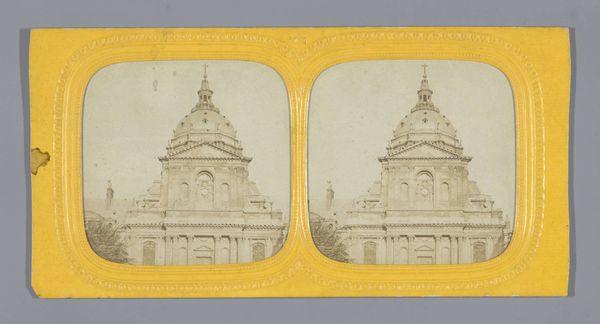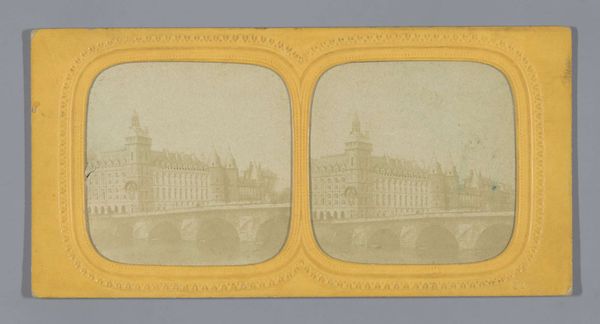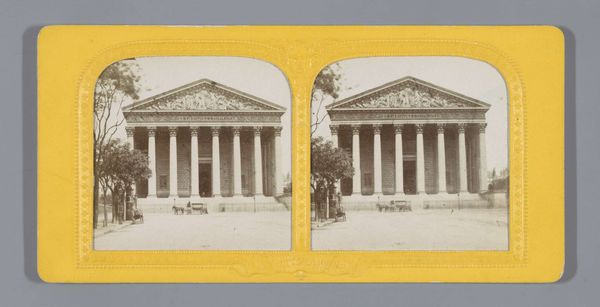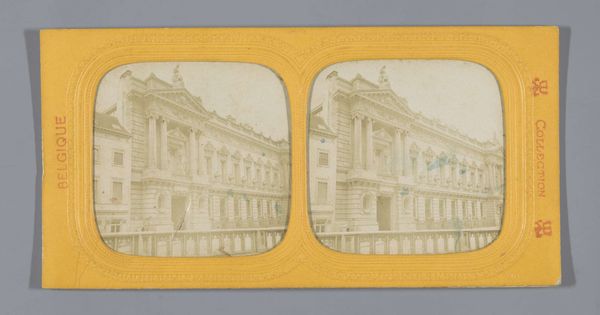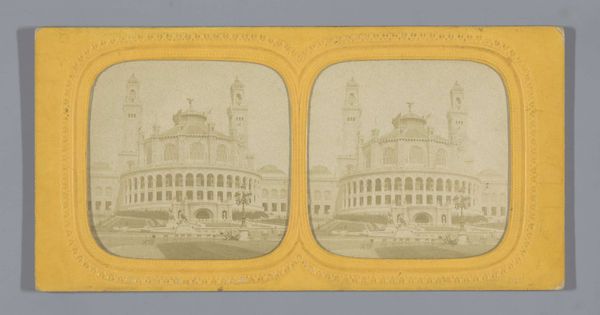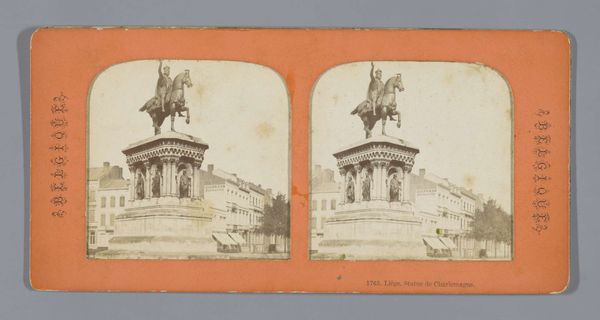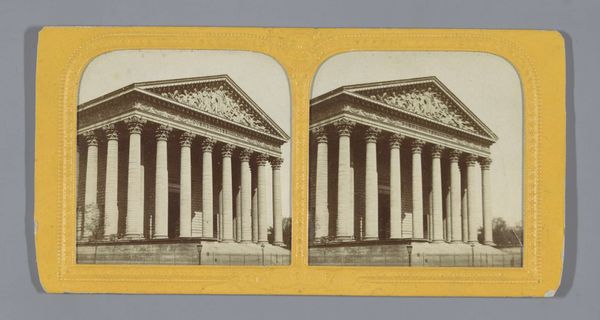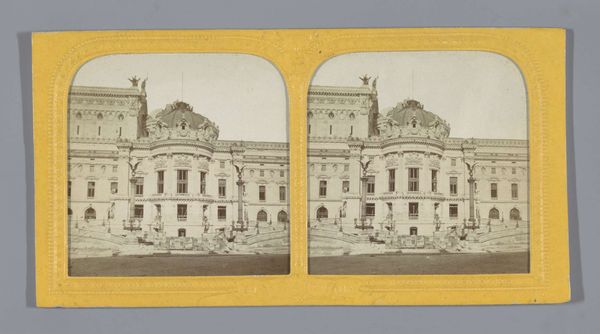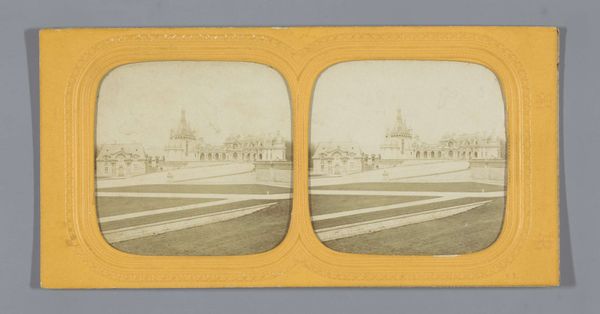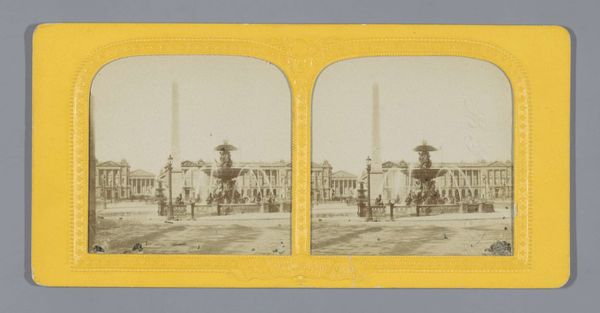
Dimensions: height 87 mm, width 170 mm
Copyright: Rijks Museum: Open Domain
Curator: My eye is immediately drawn to the perfect symmetry. There's something eternally calming about its precise balance, evoking ideas of harmony, and rationality. Editor: Indeed. What we’re looking at here is an anonymous print, likely dating from between 1855 and 1875, depicting the Panthéon in Paris. Notice the delicate lines and the clear effort to render it in perspective, it reflects the 19th-century interest in realism and the built environment. Curator: The cool neutrality of the print stock adds a clinical air. Is this a reflection on societal attitudes? The Panthéon started life as a church, transformed into a secular mausoleum, only to shift back again! Editor: Exactly! The building’s tumultuous history mirrors the political upheavals in France, each regime repurposing the space to reflect its own values and cement its authority. It is, after all, located in the heart of the Latin Quarter. The figures seem minuscule at the building's foot, dwarfed by the building itself, like they're submitting to a higher power. Curator: Ah yes, this emphasizes that delicate, intentional relationship between mortals and monuments! I feel the architecture echoes sentiments of awe and timeless permanence. You perceive history being memorialized in stone. I think you’re right. These aren’t just lines, they are a testament to legacy! Editor: And consider, too, that prints such as these were circulated widely, furthering not just architectural appreciation, but a controlled national narrative—a constructed image of French power and cultural achievement designed for both domestic and international consumption. Neoclassicism wasn't merely an aesthetic choice; it carried significant socio-political weight, echoing imperial Rome, the "golden age". Curator: This all-pervading grandeur reflects those in charge; the building becomes an icon—the building of icons, immortalized on paper! The artist—while anonymous to us—manipulates imagery to perpetuate social hierarchies! What I thought was merely calmness, may be read as forced control. Editor: It's always rewarding when something simple offers so much when you know how to approach it. Curator: Absolutely. Examining these connections has made the experience so much more thought-provoking. I'm leaving with my initial perspectives transformed.
Comments
No comments
Be the first to comment and join the conversation on the ultimate creative platform.

